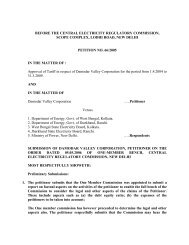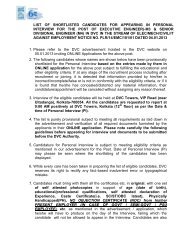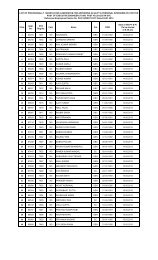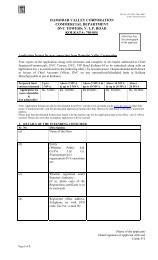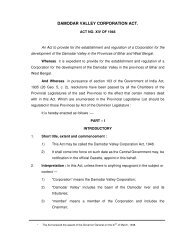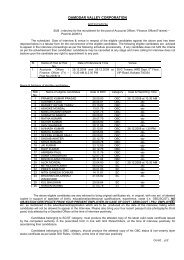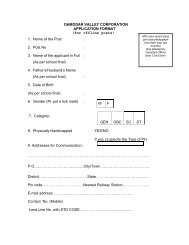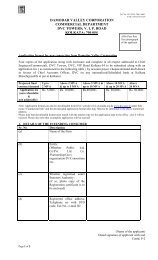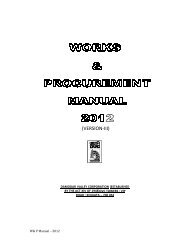(VERSION-IV) - DVC :: Consumer Login
(VERSION-IV) - DVC :: Consumer Login
(VERSION-IV) - DVC :: Consumer Login
- No tags were found...
You also want an ePaper? Increase the reach of your titles
YUMPU automatically turns print PDFs into web optimized ePapers that Google loves.
f) Approval and other guidelines for finalisation of rate contracts will be as per approved purchase<br />
procedure. The Direct Demanding Officers (DDO) as mentioned in RC shall issue supply order<br />
directly to the vendor as per terms & conditions of RC after ensuring fund provision and<br />
keeping supply order quantity within his demand placed before RC Issuing Authority.<br />
g) In order to widen the base of the supplier /contractor for determining qualifying technical<br />
requirement, the average quarterly projected quantity requirement of all the projects ( instead<br />
of the total quantity of all the projects) may be considered by TIA.<br />
h) The supplier thus qualified and L1 may or may not be able to meet the quantity requirement of<br />
other bigger projects. In order to overcome the difficulties for supplying higher quantity to a<br />
project the bidder who is capable of supplying the same may be considered provided he<br />
matches the L1 price but the same may be clearly spelt out in NIT.<br />
i) To have reliable and assured supply, the TIA may decide the splitting of the total quantity<br />
between two or three parties provided they match L1 price. While doing so, first preference<br />
will be given to L2, then L3 and so on. The L1 party should get not less than 60% requirement<br />
of any plant. Balance quantity may be distributed suitably. The split ratio of the quantity to be<br />
ordered is to be decided by TIA and be incorporated in the NIT.<br />
j) The contractor shall furnish the following certificate to the Paying Authority along with each<br />
invoice/bill against payment for supplies made against the rate contract/any supply order with<br />
longer completion period (more than a year), if the same is placed on firm price basis.<br />
‘I/We certify that there has been no reduction in sale price of the stores of description identical<br />
to the stores supplied to the Govt. under the contract herein and such stores have not been<br />
offered/sold by me/us to any person/organization including the purchaser or any Deptt. of the<br />
Central or State Govt. or any statutory undertaking of the Central or State Govt. or as the case<br />
may be upto the date of bill / the date of completion of supplies against all supply order placed<br />
during the currency of the rate contract at a price lower than the price charged to the<br />
Government under the contract.’<br />
l) The concerned dealing Officer at the same time will check the market price for the subject item<br />
from Newspapers/Journals/Website etc. as to whether there has been any fall in price during<br />
the period of contract and an appropriate action to be initiated accordingly to safeguard the<br />
interest of the Corporation. Necessary price fall clause should be part of special condition of<br />
contract (SCC).<br />
m) In case, the TIA apprehends poor response from the prospective vendors for Rate Contract on<br />
firm price basis because of volatile market condition, then the offer may be asked on variable<br />
price basis but not with both i.e. not with firm price and variable price basis simultaneously.<br />
“The price basis” as decided by TIA is to be clearly mentioned in the NIT document itself.<br />
n) In case variable price basis is preferred by TIA in order to get adequate response as per<br />
prevailing market conditions, the NIT document should specify the applicable PV formula,<br />
base date and with/without ceiling limit. In that case, bids are to be evaluated without loading<br />
the ceiling limit, if any. However, any ceiling limit, if TIA specifically spells out in the bid<br />
W& P Manual – 2012 Page 92



